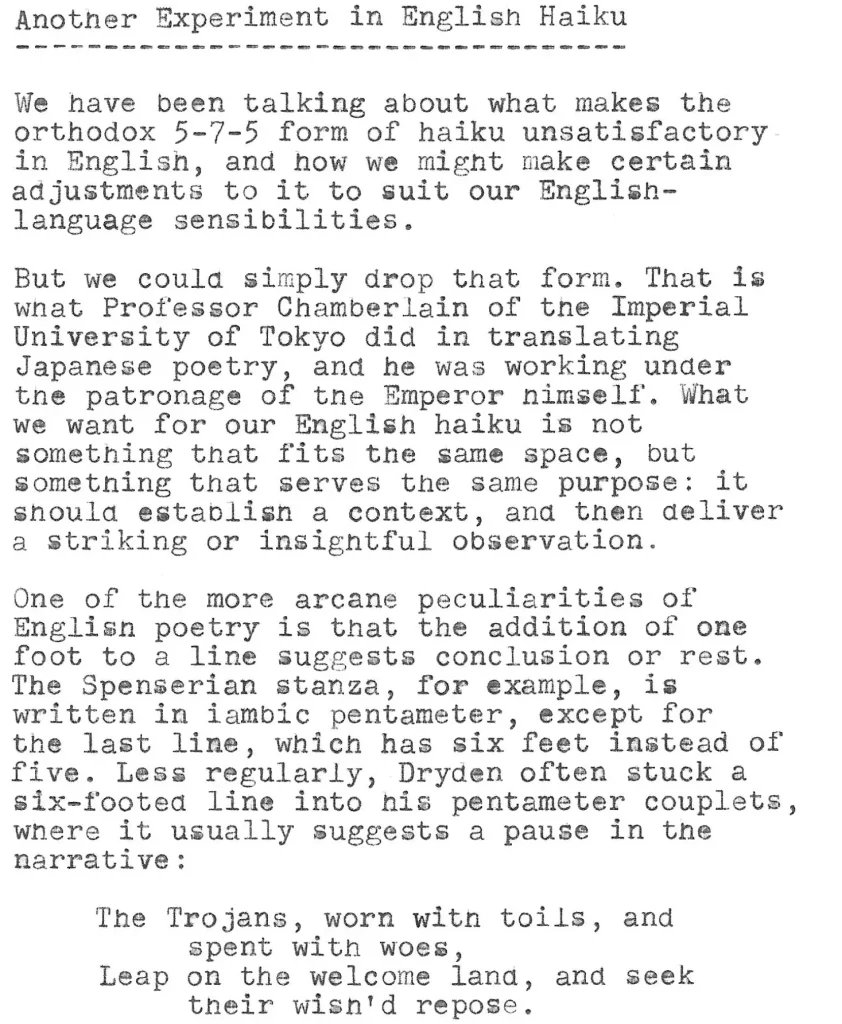


Transcribed below. The typewriter is an Underwood Rhythm Touch standard, with a new ribbon that is perhaps a little too inky.
Another Experiment in English Haiku
We have been talking about what makes the orthodox 5-7-5 form of haiku unsatisfactory in English, and how we might make certain adjustments to it to suit our English-language sensibilities.
But we could simply drop that form. That is what Professor Chamberlain of the Imperial University of Tokyo did in translating Japanese poetry, and he was working under the patronage of the Emperor himself. What we want for our English haiku is not something that fits the same space, but something that serves the same purpose: it should establish a context, and then deliver a striking or insightful observation.
One of the more arcane peculiarities of English poetry is that the addition of one foot to a line suggests conclusion or rest. The Spenserian stanza, for example, is written in iambic pentameter, except for the last line, which has six feet instead of five. Less regularly, Dryden often stuck a six-footed line into his pentameter couplets, where it usually suggests a pause in the narrative:
The Trojans, worn with toils, and spent with woes,
Leap on the welcome land, and seek their wish’d repose.
This suggests another way we might construct an English equivalent to haiku: by varying the meter of the lines to make a rhythmic distinction between the two parts, which we have designated the setup and the punch line. Here, for example, is a poem Dr. Boli calls
VIRGIN FOREST
The sacred growth of centuries;
the silence of eternal green–
and I, alas! forgot to bring a book.
Here we use a 4-4-5 structure–measuring the natural way in English, which is in feet, not in syllables–where the extra foot in the last line suggests that it is our concluding thought. Thus we have something that does more or less what the Japanese haiku does: it gives us an unequal division between setup and punch line to play with. But, unlike the orthodox 5-7-5 haiku, it sounds like poetry in English.
We can vary the number of feet. A much shorter form would be 2-2-3, again measuring in feet:
A crocus peeks
above the snow:
it’s haiku time again.
As “Occasional Correspondent” pointed out a few days ago, shorter forms are more challenging to the poet, and this form is even shorter than the orthodox haiku form.
So here are two more potential solutions to the pressing haiku problem. If we can solve that, surely hunger and poverty should be a walk in the park. And while we walk in the park we can write haiku.